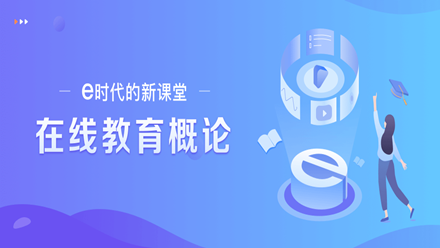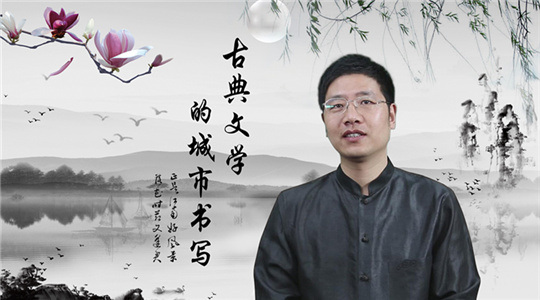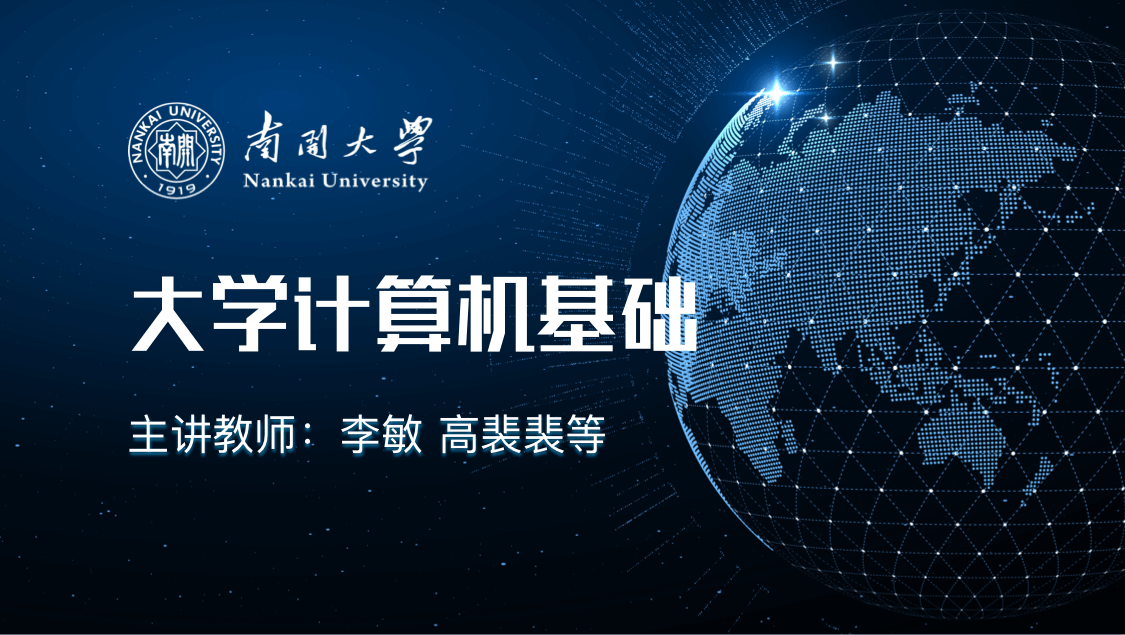
当前课程知识点:e时代的新课堂——在线教育概论 > 第一章 解读在线教育 > 1.4.1二十世纪的发展 > 1.4.1二十世纪的发展
同学们大家好
Hello, class.
这是第一周的第四讲
This is our fourth lecture in the first week.
我们跟大家来介绍一下
I'll introduce the a brief history
在线教育发展的一个简单的历史
of online education to you.
随着互联网
With the development of the Iinternet,
这种在线教育形态的出现
online education arose,
the emergence of online education
为我们那些已经毕业了
providing has provided a brand-new approach
但是需要不断地
to receive further educationto working employees
更新知识的在职人员
for working fresh graduates
who need to
提供了一种全新的
update their knowledgein constant need
可能的一种继续受教育的途径
of updating their knowledgefrom time to time.
所以世界上最早的这个在线课程
So, the world's first online courses
并非提供给这种在线的学生
were not for school students,
而是提供给那些不在校园的
but for working peopleemployees
那些在职人员
who were enrolled in schoolsout of school.
所以最早这个在线教学的形态
In the earliest days, online education
就被看作是一种
was seen as a kind
远程教育的一种形态
of distance education.
所以今天我们在谈到
Therefore, when talking about
在线教育的发展简史的时候
the brief history of online education,
你在中国的教科书
you'll find that in China, textbooks,
还有各种课程 介绍里面
textbooks, all kinds of courses, and introductions to this
in China
常常会追溯到
often trace it back to
人类的远程教育的历史
the history of distance education.
按照我们国家的一些远程教育
According to findings
研究者的归纳和总结
made by some Chinese researchers,
远程教育它大概被分为
distance education can be roughly divided
是三代远程教育
into three generations.
第一代远程教育
The first generation of distance education
被称为是函授教育
is called correspondence education.
那大家可想而知
It is conceivable that
这种教育是依赖于那种印刷技术
this kind of education depended on printing technology,
作为一种非常重要的
which is a major way
内容的传递的一种手段
to transmit content.
第二代在线教育
The second generation of distance education
远程教育其实就是我们
is actually what we mentioned
在第二讲也跟大家介绍过的
in the second lecture,
就是广播电视
namely radio and television broadcasting.
以广播电视作为一种
It is used
重要的技术手段
as a key technical means
向那些社会上广泛的
to offer education
有这种受教育需求的在职人员
to a large group of working peopleemployees
提供这种教育的一种形态
in need of further education.
所以第二代广播电视大学
Radio and television universities
这种形态
of the second generation
最有代表性的机构
are typically represented
就是英国开放大学
by The Open University of the UK.
英国开放大学
At that time,
当时它提出来的一个
The Open University of the UK
一个非常重要的理念
proposed a very important idea,
就是这种
which was called
所谓叫优质教育资源共享
quality educational resource sharing.
英国开放大学它的内容的提供
The content provided by The Open University of the UK
很大程度上
depends largely on
是跟BBC的这个电视台
the university's partnership
有一个合作关系
with the broadcaster BBC.
所以到今天为止
Therefore, even to this day,
BBC的纪录片
the BBC's documentaries
都仍然是我们今天在提到
still represent the video form of knowledge expression
这个优质教育资源的时候
which is worthy of analyzing,
非常值得大家去分析
of being analyzed,
learning and imitating
去学习 去模仿的
learned, and imitated
一种视频化的知识表达的形态
for quality educational resources.
那以互联网的出现为代表
Finally, the third generation of distance education
第三代远程教育
is represented by the Iinternet.
它最大的特征
Its biggest feature
其实就是这种教育的
lies in the online process
在线化的过程
in which education is practiced.
也就是今天我们在讨论的
This is the online education
这个在线教育的形态
we are talking about today.
所以这是三代远程教育
These are the three generations of distance education
是在线教育的一种前身
as well as the predecessors of online education.
全世界都在同步的发展
Online education is developing all over the world,
但重点我们关注的是
but we'll focus our attention
美国和中国的这个发展
on its development in the US and China.
那么在2016年出版的
A report published
这一个报告中
in 2016
它就对曾经有过的一种研究
has gone over
进行了梳理
previous studies
最后它提出来
and finally put forward the an idea
世界上第一门在线课程
that the first online course in the world
是1981年出现在美国的硅谷
appeared in the Silicon Valley of the US in 1981.
那这门课程实际上是当时
In fact, the course was designed
有一些美国非常著名的传播学家
by some very famous US experts
还有教育学家
in communication studies and pedagogy
共同为一些企业高管
for corporate executives.
设计的这样的一门类似那种
It was similar
EBMA类似的课程
to EMBA courses.
那这门课程其实最早出现的时候
When the course first came into being
大家回忆一下 1981年
in 1981, as you can recall,
1981年的网络
the Iinternet in 1981
跟我们今天完全不可同日而语
could never be compared with what it is today.
不要说像我们今天
Back then,
这样大量传视频
people couldn't even upload audio recordings,
它实际上连音频也传不了
not to mention videos, which are now uploaded in large amountsmassively.
当时唯一能够通过电话拨号传递
At that time, the dial-up internet access
大概16K 64K这样
had a speed of about 16K or 64K,
一点点提高上来的
which was accelerated later bit-by-bit.
这样一个网络带宽的条件
With such a network bandwidth,
其实只能传送什么呢
what could be transmitted?
只能传送文字
Only text.
那么最早的一个在线教育平台
In fact, the earliest online education platform
实际上有点类似我们今天的BBS
was a bit like the BBS today.
实际上它功能比今天BBS
And it actually had fewer functions
还要简陋的多
than today's BBS.
那么当时他们的一个探索和尝试
As forfar as how these people explored, tried, this area
是怎么做的这个课程
and made the course,
这个课程在报告里它没有提到
the report didn't mention it at all.
那么在另外一本
But it was mentioned in another book,
就是保罗·莱文森
a book named
是美国一个非常著名的传播学家
"Mind at Large: Knowing in the Technological Age"
在他的一本书
by Paul Levinson,
这本书的名字叫《思想无羁》
a well-known US expert
基础[原文错误,是"技术"]时代的认识论里面
in communication studies.
他就提到了
He mentioned
那么最早的一门课程
how the earliest online course
是怎么设计的呢
was designed.
其实他们是试图
In fact, they tried to
通过一个mail list
use a mailing list,
就是类BBS这样一个平台
which was a platform
去构建一个什么呢
similar to BBS,
构建一个分布在美国各地的
to create an effective system
学者之间建立一个有效的
for conversation among scholars
这样一个对话结构
all over the US.
就是谁先说
For example,
比如说每个月有一个主持人
For example, there was a host every month
然后他先发出一个主要的帖子
who would post a topic first,
然后大家跟帖
and others would post follow-up comments.
那么到了月底的时候
At the end of the month,
他可能再做一个总结
the host may make a summary.
他这个session
Then this session of conversation
对话的环节就结束了
was over.
第二个人再发起一个对话
After that, the second host would start another topic.
所以他们最早的探索
So, their earliest attempt
其实是从我们今天所谓的
actually started from
online learning activity起步的
the online learning activity,
就是在线学习任务和活动
as we call it today.
那么他们这个探索
In fact, their attempt
实际上一直影响到了后来
has affectedinfluenced
美国的几家
some universities in the US,
包括像凤凰城
including the University of Phoenix,
包括像美国州立大学
California State University
还有加州州立大学
and several other
等等几个州立大学体系
public universities in the US.
他们是最早的
Among the universities
在美国的大学里面
in the US,
开展在线教育探索的
they were the first
这样一个教育机构
to explore online education.
那么他们早期的这种探索
These early explorations
它具有这样一些特点
have certain features.
他们把这类教学称为叫AOC
They called this type of teaching AOC.
所谓AOC指的就是
As for the meaning of the so-called AOC,
加一个A Asynchronous
"A" refers to "asynchronous,"
就是异步
which means not happening at the same time.
O就是Online
"O" refers to "online"
C就是Course
and "C" refers to "course."
异步在线课程
Asynchronous online course.
那么早期的在慕课出现之前
Then what are the major features
美国早期这个异步在线课程
of these asynchronous online courses in the US
它最大的特点是什么
in the early days prior to the emergence of MOOC?
它有两个特点
It had two features.
第一个是以在线学习活动为核心
First, it centered on online learning activities.
比如说我2004年去美国访学
Here is an example. I went to the US as a visiting scholar in 2004.
注册了我今生第一门在线课程
There, I registered for my first online course in my whole life.
这门课程它实际上没有这种课件
The course wasn't equipped with
这些东西
slides or things like thissimilar tools.
它给的资源就是一本教科书
We were just given a textbook.
然后你那些音频类的
Then where could we
就是CD 这种光盘
get audio recordings
你到哪儿去借呢
or CDs?
到大学图书馆
We borrowed them from the university librariesy
或者到公立图书馆去借
or public libraries.
所以这就是它的资源
These were all the resources of the course.
那么它主要的任务就是在线上
So, the main job of AOC
构筑了一串这种学习任务
was to develop a series of learning tasks online.
所以这是它的第一个特点
This is the first feature.
第二个最重要的特点
The second important feature is that
它早期的这种AOC课程
in the early days,
全部是那种小班化教学
AOCs were taught in small classes.
你比如说像英国开放大学
Take The Open University of the UK for as an example.
它在转型到这种在线之后
After turning to online education,
它也是主要采用20到25个人的
it mainly has classes
这样一个班额
of 20 to 25 students.
那我当时在纽约州立大学
The course I took
修的那门课程
at the State University of New York
也是一个20人的
was also taught
一个课程计划班
in a class of 20 students.
所以它的特点是小班教学
So, it is characterized by small-class teaching.
那今天在慕课出现之后
After MOOC's emergence,
你会看到
you'll see that
我们其实在关注质量的
underin the circumstances
这类教学的话题下
where the quality of teaching is emphasized,
我们很多的这种教学又再向
our teaching activities are largely
这种SPOC回归
going back to SPOC,
其实就是一种线上小班教学
which is a kind of online small-class course.
这个大概可以看作是
This probably can be seen as
世界在线教育发展的第一个阶段
the first stage of online education development in the world
就是以美国的AOC
and it is represented by AOC in the US.
当然它也不止在美国
Of course, AOC isn't confined to the US.
还包括在加拿大
Institutions in Canada
还包括在澳大利亚
and Australia,
还包括英国开放大学
and The Open University of the UK,
后来做的一些尝试吧
have also made some attempts
也都具有这样一些特点
with similar features.
中国的在线课程
China's online courses
是在1999年起步的
were started in 1999.
我们国家当时把它称为叫
At that time, this attempt was called
中国网络教育试点
China's Online Education Pilot Project,
也叫做中国现代远程教育试点
or China's Modern Distance Education Pilot Project.
那么在这个试点中
In fact,
其实我们可能整个的理念
the core idea of the pilot project
偏重于优质教育资源共享
focused more on the sharing quality educational resources.
就是特别强调资源共享
Sharing of resources was specially emphasized,
因为在中国优质资源
because in China,
一直是一个稀缺资源
quality resources have always been scarce.
为了促进教育公平
In order to promote equal access to education
推动教育的这个跨越式发展吧
and the breakthroughs in education development,
我们就提出这样一个理念
we proposed such an idea,
就是优质教育资源共享
namely quality educational resource sharing.
所以从历史的脉络到这儿
Skimming through the historical context,
我们会看到
we'll find that
其实资源会成为在线教育的
resources will play a significant role
一个非常重要的一个要素
in online education.
这是1999年
This is how it started in 1999.
-混合式教学该怎么做?与清华老师一起聊聊
-看清华老师如何进行大班混合式教学
--Video
-如何做好混合式课堂的互动
--Video
-与清华大学老师聊聊慕课独特的教学设计
-“挑战60s”授课短视频大赛
--Video
-与清华大学老师聊聊慕课的制作与运营
--Video
-1.1在线教育发展现状
--html
-1.1.1在线教育带来了e时代的新课堂
-1.1.2师生说
--1.1.2师生说
-1.1.3我国在线教育的特点
-1.2什么是在线教育
--html
-1.2.1概念解析
-1.2.2教育的技术发展史
-1.2.3在线教育的五要素模型
-1.3在线教育对教师的机遇与挑战
--html
-1.3.1机遇篇
--1.3.1机遇篇
-1.3.2挑战篇
--1.3.2挑战篇
-1.4在线教育发展的历史
--html
-1.4.1二十世纪的发展
-1.4.2二十一世纪的发展
-1.4.3在线课程三要素
-1.4.4虚拟教育组织
-1.5课程内部体系和外部关系
-第一章 解读在线教育--单元习题
-讨论题
-2.1数字时代带来教育变革
-2.2在线教育更适应学生的学习需求
--html
-2.2.1教育需求的发展
-2.2.2学习风格与学习类型
-2.2.3多模态数据分析学生学习行为与需求
-2.2.4教育目标
-2.2.5拓展学习时空,促进深度学习
-2.2.6自主学习系统的案例分享
-2.3在线教育帮助教师成长
-2.4学校和国家为什么要做在线教育
-单元习题--作业
-3.1高等学校在线教育发展
-3.1.1学校现状
-3.1.2平台与联盟
-3.2不同类型的教师都能得益于混合式教学
-3.3混合式教学的好处
-3.3.1当前的教学问题
-3.3.2教师和学生的收益
-3.4混合式教学的关键细节与常见误解
-3.4.1关键细节一
-3.4.2关键细节二
-3.4.3关键细节三
-3.4.4误解篇一
-3.4.5误解篇二
-3.5智慧教学工具的发展
-3.5.1综述篇
--3.5.1综述篇
-3.5.2雨课堂的诞生
-3.5.3雨课堂的功能
-3.5.4课堂教学需要雨课堂
-3.5.5雨课堂解决面授时间紧张的问题
-3.5.6雨课堂解决课前课中课后的学习效果问题
-3.5.7课前课中课后雨课件设计要点
-第三章 高校在线教育进行时--单元习题
-讨论题
-讨论题
-4.1教育实践的展望(一) 教育创新
-4.2教育实践的创新(二) 教育技术与决策
-4.3教育理论的热点趋势
-第四章 在线教育的未来--单元习题
-讨论题
-5.1邓俊辉老师《数据结构》与《计算几何》教学案例
--html
-5.1.1慕课制作与使用心得(一)
-5.1.2慕课制作与使用心得(二)
-5.2张瑜老师《思想道德修养与法律基础》教学案例
--html
-5.2.1教学理念与混合式教学的主要环节
--Video
-5.2.2章节实例
-5.3杨芳老师《大学英语》教学案例
--html
-5.3.1混合式教学设计心得
-5.3.2 University单元教学设计
-5.4于歆杰老师《电路原理》教学案例
--html
-5.4.1小容量班级完全翻转课堂
-5.4.2大容量班级部分翻转课堂
-5.5郑莉老师《C++语言》教学案例 雨课件样例及校内教学心得分享
--Video
-单元习题--作业





